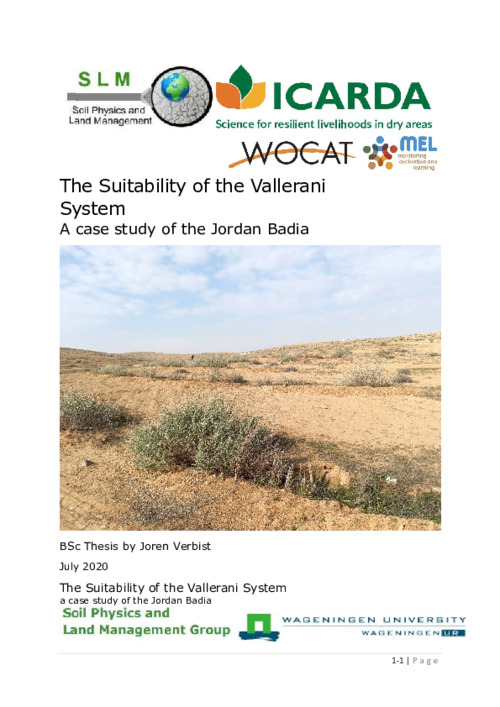The Suitability of the Vallerani System: A case study of the Jordan Badia
Abstract
The Al Majeddyeh watershed is located in the Jordan Badia and is severely degraded area, because of
overgrazing and conventional ploughing. In small portions, land is rehabilitated through the
implementation of Sustainable Land Management practices (SLM). Two of these SLM’s are water
harvesting techniques. On upstream hillslopes, micro water harvesting is practiced in the form of the
Vallerani System. In the downstream, macro water harvesting is practiced. All the water obtained in
the upstream areas is harvested here. However, an upstream-downstream conflict occurs, since both
water harvesting techniques compete for water. In addition, the Vallerani System requires large
investments and encounters the obstruction of market formation. This thesis aims at gaining insights
on the suitability of the Vallerani System. An upstream downstream approach has been applied to
identify the components of the watershed. Their linkages are qualitatively described in terms of
vegetation, erosion, and water. Experts opinions and estimates have been used to model the water
storage capacity decay of a Vallerani System over time. Literature research and surveys were done to
determine possible implementation bottlenecks from a policy and social perspective. This thesis
showed that the Vallerani pit decays over time, reducing its water storage capacity. By showing this,
a model was made which showed the possibility of expanding the Vallerani System throughout the
watershed while maintaining a targeted amount of discharge in the downstream. The suitability was
determined based on these findings. Since the thesis researches a significant knowledge gap and
measurements were unavailable due to Covid-19 outbreak, it was not possible to validate the results.
The research was validated by the experiences of local SLM-experts. A future validation research is
therefore highly recommended

